
Sharing More Memories of Mexico
Although this year’s Baja Ha-Ha didn’t eventuate (thanks, COVID) we’re not short of stories about Ha-Ha sailors’ adventures in Mexico. The Grand Poobah has been keeping the memories alive with regular dispatches about the Ha-Ha’s past, and we’re happy to spread the cheer. There’ll be no “Baj-humbug” from us!
The Baja Ha-Ha celebrates cruising everywhere in Mexico — even by folks who continue on around the world. We’re looking at you, Rob and Mary Miller of the Finch-46 Maude I. Jones.
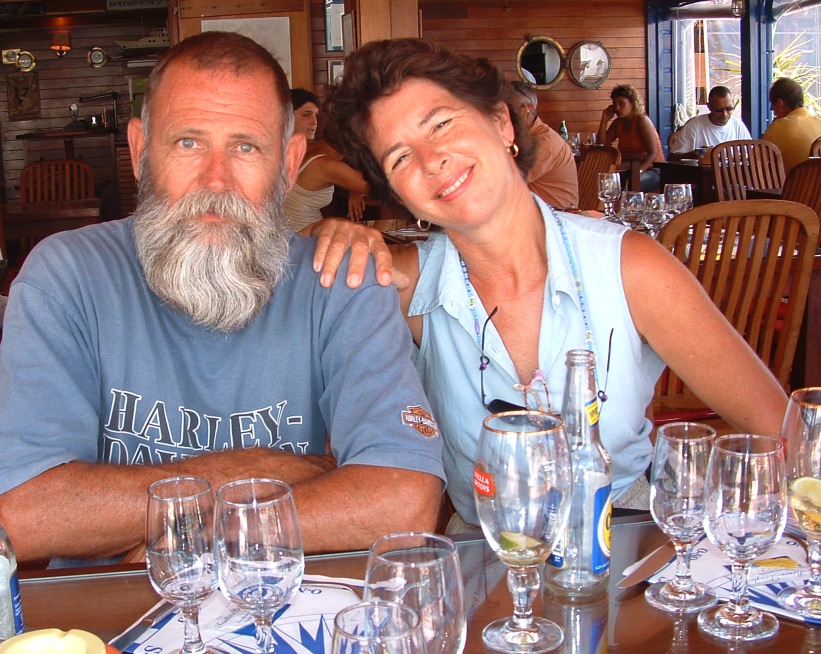
Theirs is one of the small number of wood yachts to have done the Ha-Ha. The couple did the first Baja Ha-Ha in 1994, and continued on around the world on a slow circumnavigation. As in, at least 10 years.
If we remember correctly, the couple spent a winter among the fjords of the South Island of New Zealand. Although we may be mixing them up with Bruce Balan and Alene Rice of the Cross 46 Migration, who did the Ha-Ha and have now covered more than 50,000 ocean miles. Many of those miles were off the Milk Run, such as to Japan and home across the North Pacific.
As for Rob and Mary, we bumped into them in 2004, 10 years after their Ha-Ha, in St. Barth. They were still with Maude I. Jones; we were there with Profligate. They looked healthier than ever, as you can tell from the photos.
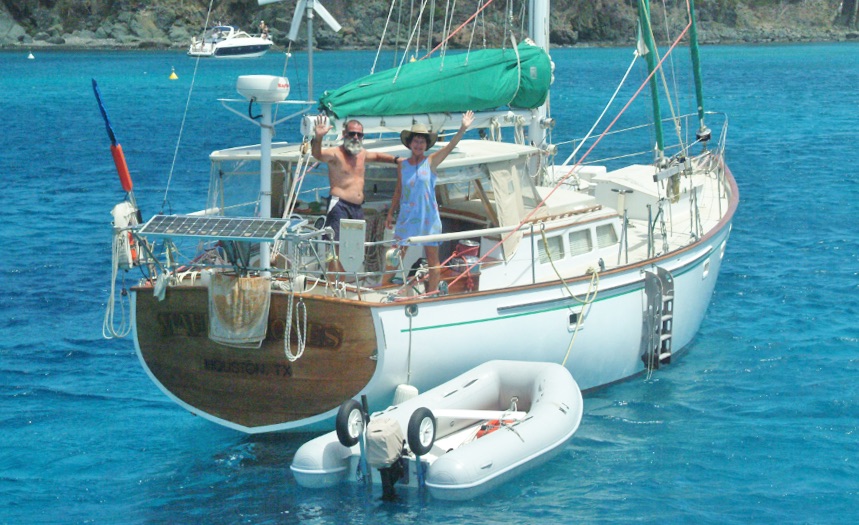
The moral of the story is that if you do a Ha-Ha, or if you did the Nada Ha-Ha because there wasn’t an official Baja Ha-Ha this year, be careful, because you may be in for a much longer adventure than you anticipated.
Sailors Help Improve Data Collection on Floating Marine Debris
As Bruce Balan and Alene Rice have sailed thousands of miles aboard their Cross 46 Migration, it’s reasonable to assume they have seen more marine debris floating on the ocean than the average person. It’s therefore no surprise that they received an email inviting them to help collect data on the debris they encounter at sea. Bruce forwarded the email to us at Latitude 38 so we could share the message and invite more sailors to participate.
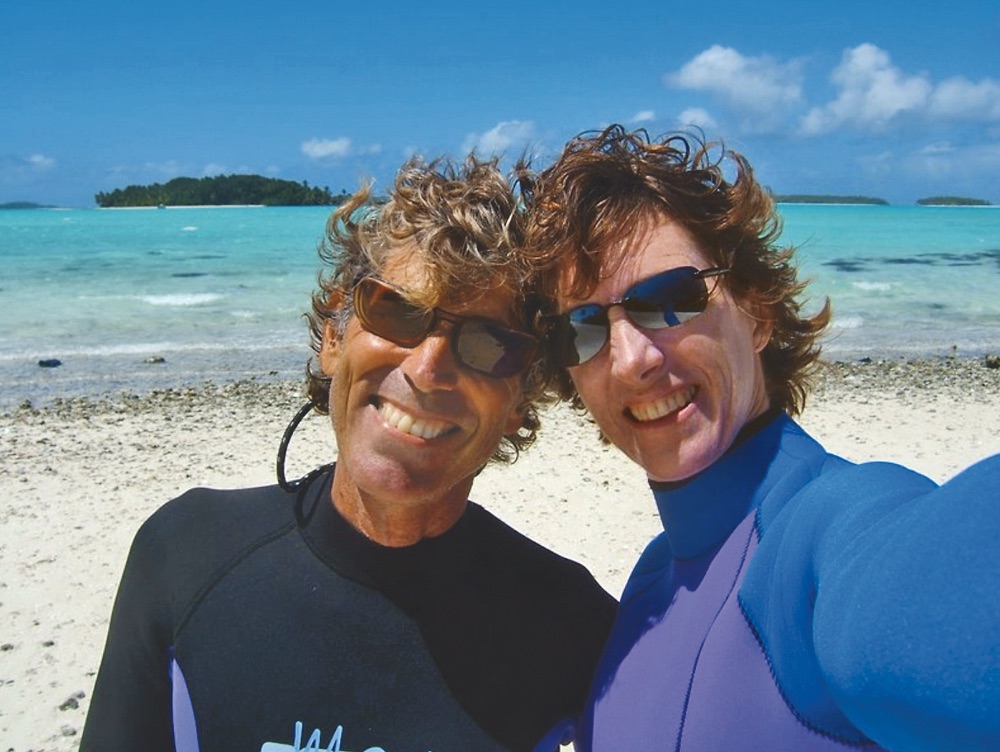
The program, supported by the European Space Agency, is being run by a team of scientists from the FRONTAL project team at Plymouth Marine Laboratory. The team’s aim is to try to “understand to what extent satellites can detect floating marine debris.” To achieve this they are collating observations at sea and matching them to satellite images.

Here’s how you can help:
If you see debris from your boat, during a beach walk, or even on a social media post, share the details using the Floating Marine Plastic Debris Accumulation Reporting Tool. It’s a very long name, but a very brief survey.
Here’s the link: Floating Marine Plastic Debris Accumulation Reporting Tool. The survey will run until summer 2021.
Bruce has already begun his observations and sent us this little list of tips:
1. They are interested in debris patches — 2 meters across and larger.
2. The reporting form currently asks for latitude and longitude in decimal degrees.
Bruce has written the team to ask if they can accept degrees and decimal minutes, but at the time of his email to us, he hadn’t received a reply.
So, now you know what to do. Observe, and fill in the survey. Everything we as individuals do to help science monitor and understand ocean debris will surely ultimately contribute to the solution.
Spaulding Marine Center Invites You to Help Launch Boatworks 101
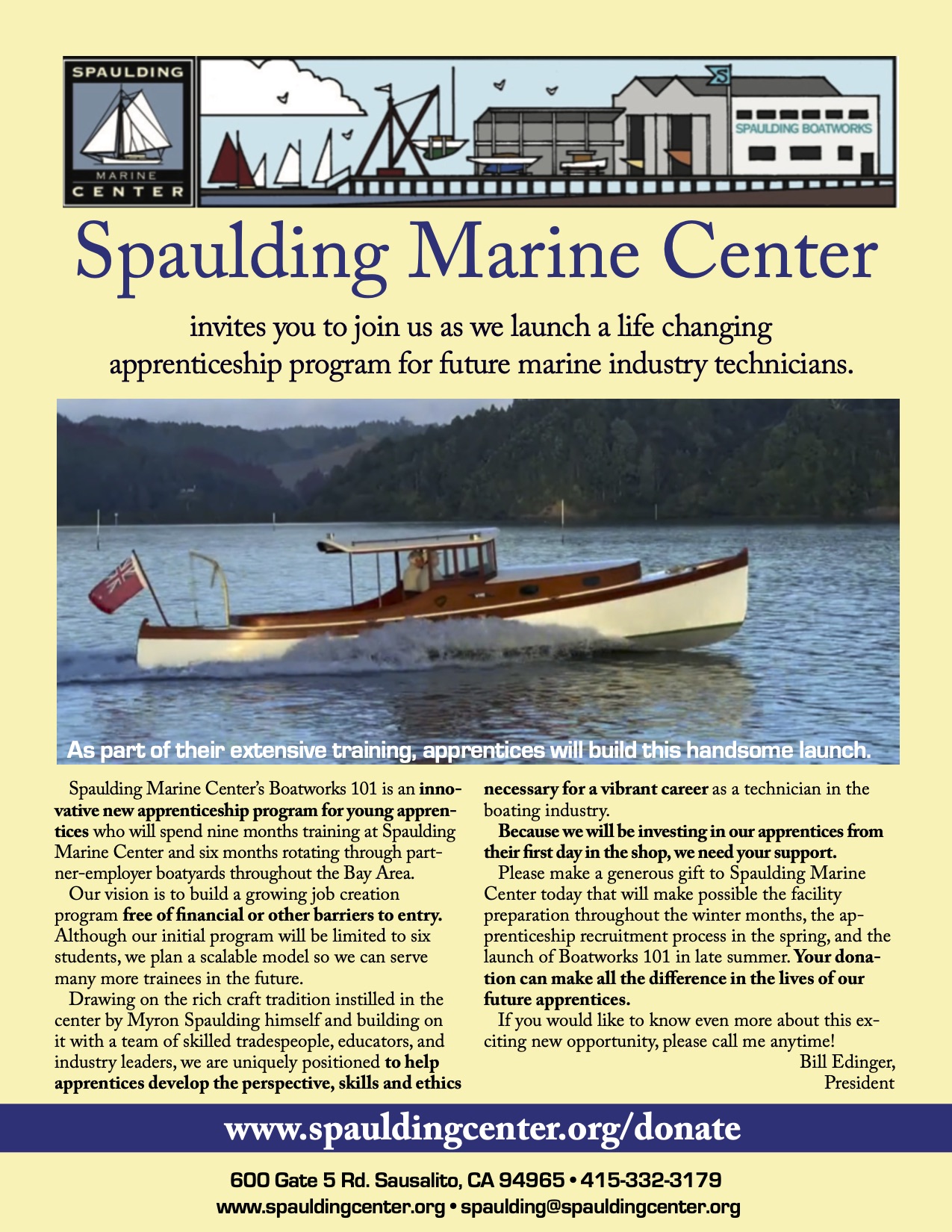
Prada America’s Cup World Series Starts ‘Today’
New Zealand is a country where tomorrow happens today. The Prada America’s Cup World Series Auckland and the Prada Christmas Race run from December 17 to December 20, meaning the racing starts this evening at 6 p.m. on the West Coast of the US. This is the first opportunity for these massive, foiling waterbugs to line up and really give us all a sense of the pace of the respective teams and who has the best prospects for bringing home the Auld Mug during the actual America’s Cup match in March.
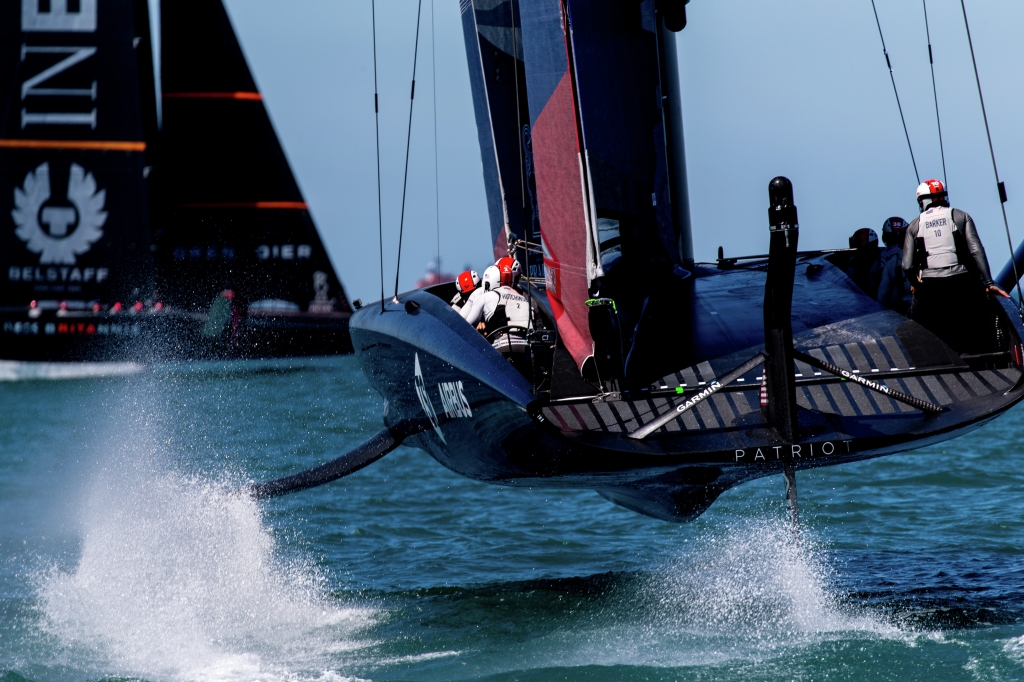
The four teams will all race their second-generation boats. The word on the docks is that New Zealand is looking strong, while American Magic and Prada will be competitive and Ben Ainslie and INEOS are still getting up to speed. With all the new technology and time between now and the Cup, there’s lots to learn and room for improvement on all of the teams.
The first races will start on December 17 at 3 p.m. NZT, weather permitting, which means 6 p.m. PST for us West Coast folks. This will be the first time the teams actually come together to race. For this event, Defender Emirates Team New Zealand will be racing in the round robin with the Challengers. Then the January Challenger Trials will determine who will challenge New Zealand for the Cup.
Unfortunately “getting a glimpse” does not necessarily come easily or cheaply. Since nobody can travel to New Zealand, everyone has to watch online. According to Scuttlebutt, “The event website explains how to watch on screens, with the American Magic team telling US viewers they can choose to watch America’s Cup racing on television via the NBC Sports Network, streaming on www.nbcsports.com (with subscription), or streaming via the NBC Sports Gold America’s Cup Pass.
“For US cord-cutters, access appears to require paying the US$174.99 fee for the pass. To help soften the blow, American Magic and NBC Sports have a Discount Code (AM10) for the NBC Sport Gold America’s Cup Pass subscription. To use it, click here.”
Outside of those options, we’d guess you’ll have to be scanning social media to follow the action or find the post-race reruns to see the actual competition. The good news is that, even though we’re not in Auckland, we’ll know results of racing on the 16th and the Kiwis will have to ‘wait’ until the 17th.
Looking back, it’s been a difficult year to get boats to a starting line. It’s amazing the America’s Cup has pulled it off at all. For the future of the Cup you can tune in to tomorrow, today.
Will the Singlehanded Transpacific Yacht Race Happen in 2021?
The Singlehanded Transpacific Yacht Race had been scheduled to run in summer 2020. But the Singlehanded Sailing Society had to postpone it until 2021, mostly due to quarantine requirements on the Hawaii side. The race finishes in Hanalei Bay on the north shore of Kauai.
Race chair Brian Boschma shared news of the race’s future during a Zoom meeting for SSS sailors on December 3. He said he’d heard from a number of the 2020 registrants that they were coming back, with some additional people interested, for a fleet of perhaps 25 sailors. However, “We’re not through the COVID waters yet,” explained Brian.
“The plan is to sequester boats on June 18. Traditionally, that’s been at the Corinthian Yacht Club. The start of the race would be June 19, with the startline at CYC in Tiburon. I expect the first arrival to be about June 30 in Hanalei Bay. It depends on the boat types. If we get some ultra lightweight, super-fast Moore 24 or something, maybe it’ll beat that time. The committee on site at Hanalei Bay will probably arrive on June 29. The awards ceremony is currently scheduled for July 10 at the Nawiliwili Yacht Club, which is a bit of a drive around the island. There’s also a bus that runs wonderfully around the island; it gets you over there in about an hour and a half. I’ve used it a few times. The final rules and communications plan will be available near the end of December.”
Regarding the pandemic, Brian said, “On the San Francisco side, we could possibly not have access to the yacht harbor at CYC other than the startline. If they can’t have group meetings and such, I don’t think they’re going to want us in there with our boats. The departure luncheon, which we’ve held at CYC in the past, and sometimes at restaurants in the area, could be impacted if we still have COVID restrictions. And boats may not be sequestered at all at the CYC docks. So we might have to think through our strategy on sequestering or not sequestering. There is a lot of value in having all the boats get together. I notice a lot of people help each other that last day. And I think they would be a missing part of the race if we can’t do it.”
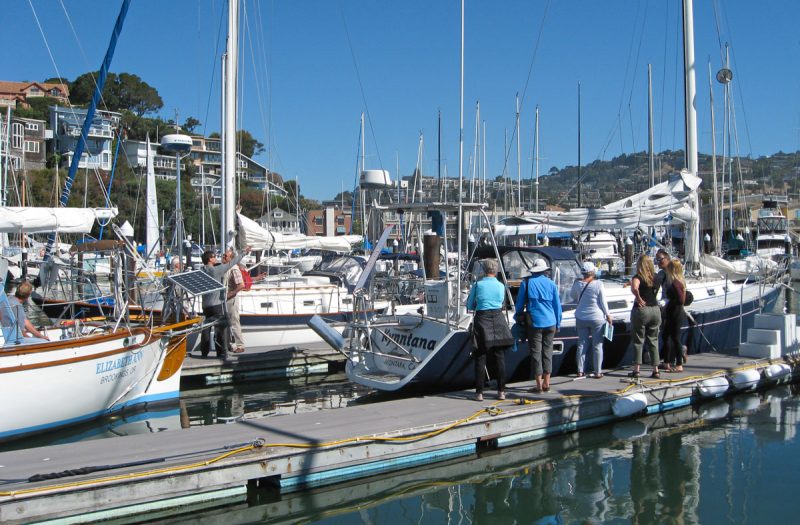
Brian spoke with the authorities in Kauai. “Kauai is under stricter restrictions than the rest of the islands. They’re currently under a 14-day quarantine restriction for anybody arriving from out of the area, which is pretty strict. They don’t want you to leave your hotel or home. And they enforce it. They have roadblocks on the island, and they check people driving along. Will that be lifted? I talked to the county administrators today on the phone about it. And they said, ‘Call us in February, because we have no idea.’ Beach-going or beach gatherings are limited to five individuals. Large gatherings are completely prohibited, so that if that’s still in place that could be a complication for our tree meetings and get-togethers at a little house we rent near the beach. The awards ceremony in the traditional manner potentially could not be held.”
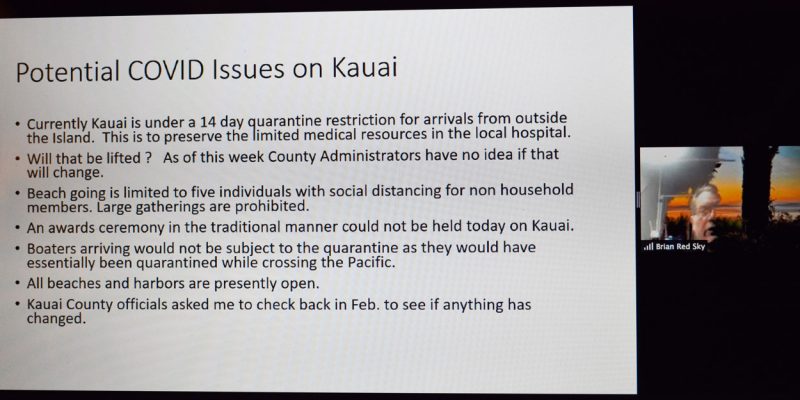
“In summary, we’re moving forward with planning; we expect to run the race. If restrictions in Hawaii are not lifted with regards to the 14-day quarantine period, I personally see this as a big problem because people who come to greet the racers are likely to not want to go over there and spend 14 days sitting in a hotel room or house. I think that this is one of the big sticking points we had last time, which was we just felt it wasn’t feasible to do the race because of the impact it had on the non-racers as well as the racers. Additionally, that impacts the race committee. It would imply that the race committee has to go over there two weeks in advance and sit around.”
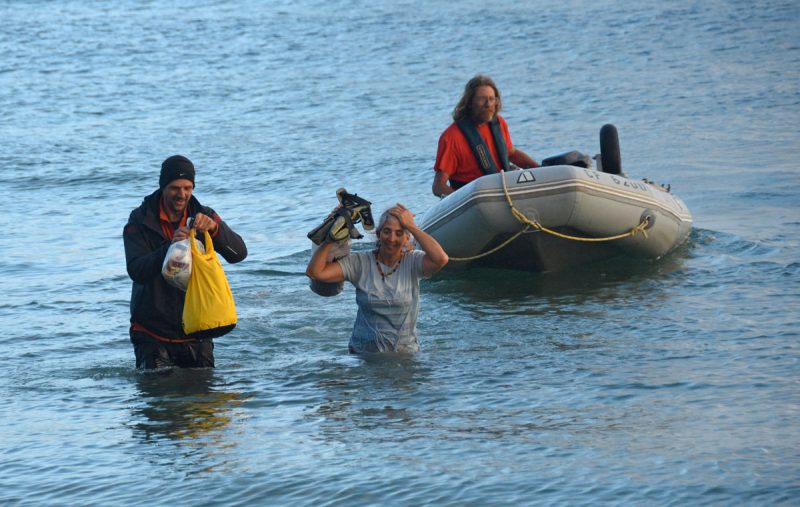
Brian explained that although other islands in Hawaii have a system of testing within 72 hours to allow visitors to enter without quarantining, Kauai has tighter restrictions, as their hospital is very small. He plans to make a final decision by March 15. “There’s some other alternatives. We could have a no-race committee finish and a self-managed finish line where individuals record their time. And we can track how close you were to that with satellite data. But that’s only good to about a 10-minute window. I think the first couple races to Hawaii were done like that.” (Without satellite tracking in 1978.) “We talked about that this year, but no one seemed excited about it.” Another possibility would be to go down the coast or go out in the Pacific and turn around and come back. “And then of course, we could delay the race to another season.”
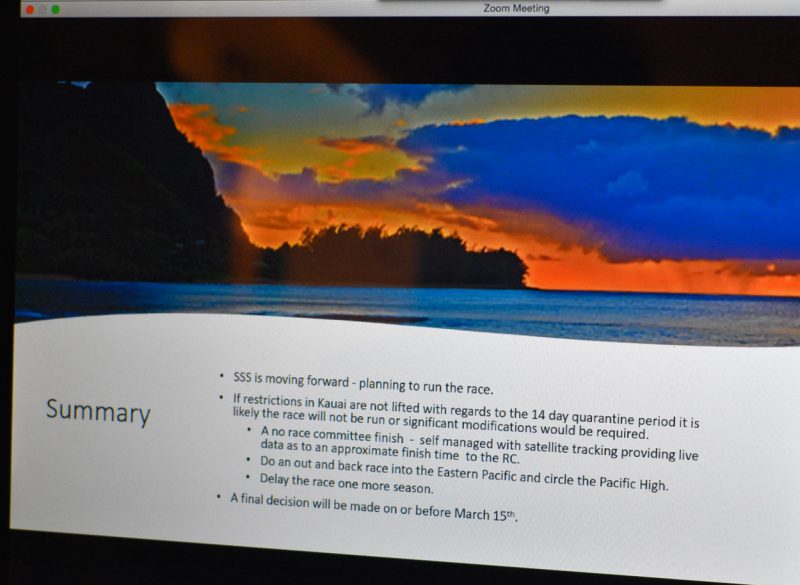
Moving the SHTP from even years to odd years seems like a good idea. “It gets this race out of the shadow of the Pacific Cup. There are racers who would like to do both. If we have to delay again, we’ll have to have a discussion about whether we do races two years in a row to hold the odd year planning. The LongPac would shift as well.” The Great Pacific Longitude Race is a 400-mile qualifier that runs on opposite years from the SHTP.
The Pacific Singlehanded Sailing Association, based in Marina del Rey, had planned to run their Shaka Challenge simultaneously with the SHTP, finishing in the same place around the same time, and sharing the awards ceremony in Nawiliwili. That is still a possibility.
We’ll keep you posted on further developments on this and other significant races for West Coast sailors. In the meantime, we’re looking forward to the first race of the 2021 SSS season, the Three Bridge Fiasco on January 30.
